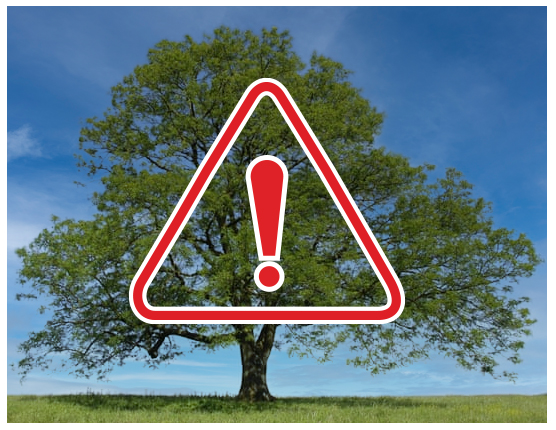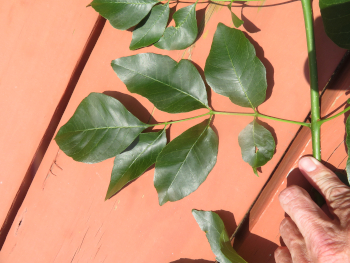Are You Ready For Emerald Ash Borer?
 Alert! Tree Emergency!
Alert! Tree Emergency!
Austin, we need to prepare for a very serious problem that could have big impacts on our urban forest. Even if you don’t know much about trees, you can help!
Ash trees (Fraxinus spp.) could be attacked at any time by a destructive insect called Emerald Ash Borer (EAB), Agrilus planipennis. All species of ash can be hosts for EAB. This beetle was accidentally brought to the US from Asia. It was first discovered in Michigan in 2002. Since then, it has spread through 35 US states and into Canada. The insect has killed millions of ash trees throughout the northeastern United States. Texas foresters have found the beetle in five counties. We have not seen EAB close to Austin yet, but we might discover an attack any day. You might even be the first to identify the insect in our area!
There are four main species of ash tree in central Texas. They are Texas ash (F. albicans), Mexican ash (F. berlandieriana), Arizona ash (F. velutina) and green ash (F. pennsylvanica). It’s fun to learn which species is which, but EAB attacks every kind. It could kill all of them in a few short years. Now is the time to prepare, so we can save as many trees as possible.
Find Your Ash!
In order to save our ash trees, first we have to know where they are. Austin is a big city, with close to 34 million trees (according to Urban Forestry Inventory Analysis). Only about two to three percent of our trees are ash, but that still means over a million trees! We recommend community members learn to recognize them in case any are located near their homes.
What to look for:
-
Compound leaves
Ash trees have compound leaves. There is a bud at the base of each leaf where it meets the twig. Most ash leaves in Austin will have 5-7 leaflets. One leaflet extends straight from the end and the others grow sideways from the leaf stalk, or petiole.

There is a bud at the base of each leaf stalk (petiole). If you see multiple leaflets but only one bud, it is a compound leaf.
-
Opposite arrangement
Ash trees display an opposite growth pattern. This means that all the parts of the tree will grow in pairs. Leaves and twigs will start from opposite sides of their parent branch and grow away from each other. Here are two opposite leaves. Remember, you can tell this is two leaves because there are two buds visible.
Twigs also grow opposite each other, although sometimes one side is missing due to damage in the past.
-
Samaras
The seed of an ash tree forms inside a pod called a samara. Samaras are shaped like paddles or teardrops. They are mostly flat but there is a swollen bump near the center where the seed is.

-
Bark pattern
Ash bark develops a distinctive pattern. If you look closely, the ridges of bark form diamond shapes. Young trees will not usually show this pattern.
Help Us Find and Map Ash Trees with the iNaturalist App
Foresters will benefit from locating our ash trees no matter which kind they are. You can confirm whether you have an ash using iNaturalist. Upload two or three photos via the mobile app or the internet browser. Scientists will help with identification to make sure the data is accurate. Then we will use that data to plan for managing our forests when the insect arrives.
So, get out there and help us find our ash! While you're at it, watch for signs of EAB. You can learn what to look for in the next installation in our series, What Is Emerald Ash Borer.
This information is sponsored by the City of Austin. Learn more about trees and resources at the Tree Information Center!


